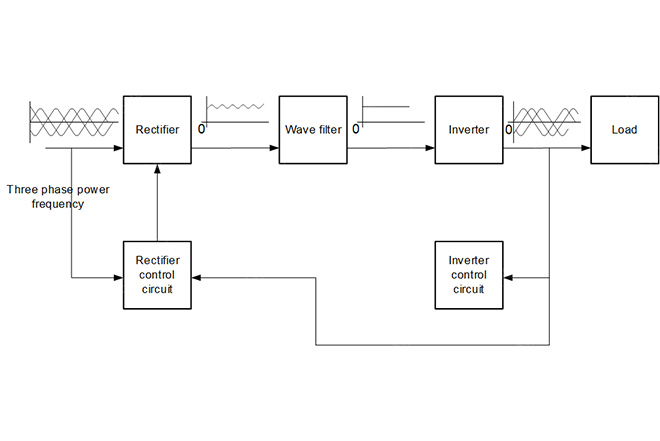- Tel:+8613007564317
- Email:[email protected]
FAQ

As shown in the figure, the thyristor intermediate frequency device is composed of controllable or uncontrollable rectifier, filter, inverter and some control and protection circuits. During operation, the three-phase power frequency current is integrated into pulsating DC through the rectifier, and then transformed into smooth DC through the filter and sent to the inverter. The inverter uses thyristor as the electronic switch, which converts the DC current into a current with higher frequency to supply the load. In the medium frequency induction furnace, the medium frequency current transmits energy to the load through the induction coil, and the induction coil is often a component of the inverter. The power factor displayed by the induction coil and the charge is very low. In order to improve the power factor, the tuning capacitor needs to provide reactive energy to the induction heating load. In practice, capacitors and induction coils are used in series or in parallel or in combination. Therefore, inverters can be divided into three types:
1) When the capacitor and induction coil form series resonance in the inverter, it is called series inverter. The voltage of the series inverter is a function of the voltage of the induction coil, and the current of the inverter is the same as that of the coil.
2) When the capacitor and induction coil form parallel resonance in the inverter, it is called parallel inverter. The voltage of the parallel inverter is the same as the coil voltage, while the current of the inverter is much smaller than the coil current. The former is a function of the latter. The performance of parallel inverter is closer to that of medium frequency generator set, and it is widely used in induction furnace.
3) A series parallel inverter that combines the characteristics of series and parallel inverters.
In addition, there are frequency doubling inverters that can improve the working frequency. These are passive inverters, because they do not return the converted AC energy to the power supply.
In fact, there are many circuit structures and classification methods of passive inverter. For example, according to the number of phases output by the inverter, it can be divided into single-phase, three-phase and multi-phase; According to the line structure, it can be divided into symmetry and asymmetry; Or bridge and non bridge, etc. The circuit structure of inverter for induction heating mainly includes single-phase bridge parallel, series, series parallel and frequency doubling inverter circuits. These lines have their own characteristics, so it is impossible to clearly divide their application scope, let alone simply compare their advantages and disadvantages.
We will get in touch with you as soon as possible
